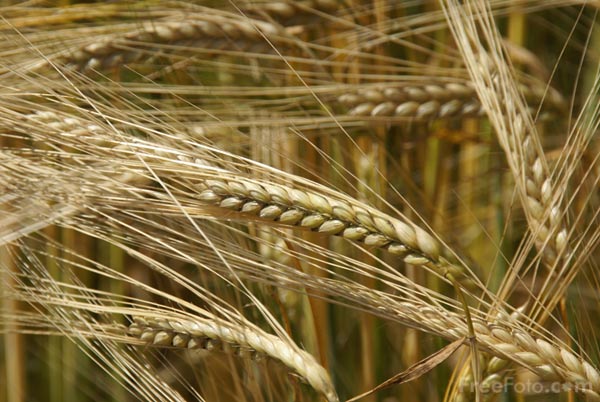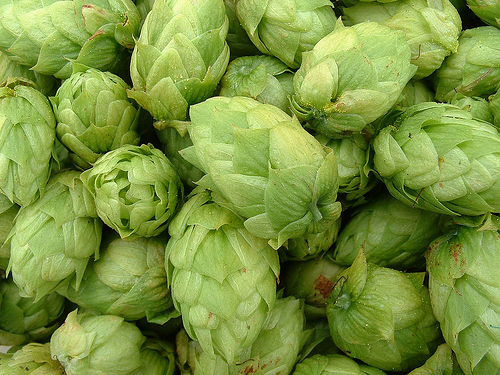Cazenovia, N.Y.
NEAR the farm that grows the pumpkins for his pumpkin ale and the ranch that raises wagyu beef for the brewpub he owns, David Katleski parked his S.U.V. in the middle of an empty field. “What we’re going to recreate is old hop barns,” he said, surveying a grid of wooden stakes. “Stone hop barns.”
“Are you familiar with the hop barns of Madison County?” his wife, Karen, asked from the back seat.
She was referring not to some steamy romance novel, but to a romantic past: the days when hop barns, those squat, often turretlike structures housing charcoal fires, perfumed the air of central New York with the scent of drying hops. Resinous flowers that give beer its bitterness and flavors of pine, herbs and fruit, hops were a huge part of the local economy in the late 19th century, when New York State grew up to 90 percent of the nation’s supply. But the business withered as beer production became industrialized.
Nearly a century later, the Katleskis and other farmers and craft brewers are trying to revive the region’s hop culture, harnessing the current passion for all things local and artisanal. Just as they and brewers around the country are turning to barley, wheat and other ingredients grown locally, New York beer makers are increasingly using local hops. Some, like the Ithaca Beer Company and Brown’s Brewing Company in Troy, are planning next year to open so-called farm breweries that will raise the crop themselves.
Here in a small organic garden, Mr. Katleski has been growing hops for the Empire Brewing Company, his brewpub in nearby Syracuse, since 2009, and he hopes someday to brew using only local ingredients. The two hop barns he plans to build in the spring will be largely decorative, forming the facade of his Empire Farmstead Brewery, a 20,000-square-foot production and canning center flanked by hop trellises and vegetable gardens — a sort of hop chateau.
Wine terminology is not out of place. Dozens of hop varieties, some scarce and highly sought after, are used in brewing around the world, and connoisseurs say they lend flavors and aromas to beer that are as distinctive and varied as those that grapes and soils give to wine. Mr. Katleski, president of the New York State Brewers Association, said that although New York brewers sometimes use local examples of hop varieties grown in, say, the Pacific Northwest, their beers taste vastly different.
“What I’m getting is a very fruit-forward or grapefruit-forward flavor from the hop, and less bitterness,” he said. “It kind of just comes from the natural terroir.”
So does much of the inspiration for a hop renaissance: Near several breweries lie the vineyards of the Finger Lakes, which have not only won an international reputation but also spawned a side business in tourism.
“We’re trying to create a beer culture in the area, much like you have a wine culture,” said Jeremiah Sprague, a home brewer and full-time vineyard employee who recently helped oversee the first major harvest at Climbing Bines Hop Farm in Penn Yan, which overlooks Seneca Lake. With his high-school friends Chris Hansen and Brian Karweck, Mr. Sprague is transforming the site into a farm brewery where hops will be grown and dried.
“The coolest thing we’re going to have,” he said, “is the ability to offer some estate-hopped ales,” the fruits of the roughly 1,500 hop plants the farm has already cultivated.
A principal goal of the revival effort is agritourism that demonstrates where the ingredients come from. Visitors to Climbing Bines will see that hop vines resemble bushy green telephone poles, and will taste the wide differences among varieties, from grapefruity Cascade to earthy Fuggles to intensely bitter Nugget. Education is even built into the farm’s name: Hop plants are not vines that climb with help from tendrils or suckers, but bines — stems that wrap in spirals around their supports.
Homegrown beers are not unique to New York. The Sierra Nevada Brewing Company in California and Rogue Ales in Oregon have become known for “estate beers” containing their own hops and barley, a niche pioneered in the 1990s when several California wineries started breweries. Farm breweries have sprung up recently in the East, from New England to North Carolina.
But an unusual concentration of hop farms is emerging in New York, fueled by local history and embodied in a pastoral symbol: the hop barn, where farmers dried, stored and baled their crop for shipping as far away as England.
In 1889, The New York Sun reported a “mania” for hop farming: “A prominent hop-grower describes it as being simply the spirit of Wall Street carried afield.” The industry was destroyed by aphids and mildew, competition from the Pacific Northwest and Prohibition.
Becca Jablonski, a former agricultural specialist with the Cornell Cooperative Extension of Madison County, said the New York hop revival began in 2000 when enthusiasts gathered to preserve the few remaining barns. Several growers formed the Northeast Hop Alliance, which had at most 10 members until last year, when its first big hop-farming workshop increased the ranks tenfold.
Steve Miller, whom the cooperative extension installed in May as New York’s first hop horticulture specialist, predicted that statewide acreage devoted to hops would more than double next year, to over 100 acres.
Many brewers are excited by the past they are restoring. Randy Lacey is building a classic pitched-roof hop barn near Ithaca to house his Hopshire Farm and Brewery, where he will use waste heat and a wood-fired boiler to dry his hops as traditionally as possible.
Mr. Katleski, meanwhile, has been working with State Senator David J. Valesky and Assemblyman William D. Magee to promote a bill, modeled on a 1976 law that jump-started the state’s wine industry, that would create a special license for farm breweries that use a designated percentage of New York-grown ingredients. The bill, which would reduce licensing costs and logistical barriers to tourism, has encountered no opposition, Mr. Valesky said.
Even if the legislation passes, the state’s farm brewing movement will be slow to develop. Hop plants take three years to reach maturity, and harvesting and processing equipment is scarce.
Still, the growers who have dabbled in hops, harvesting mostly by hand, say technology suited to their small farms is becoming more available.
Ultimately, what they are betting on is the sense of place that their products will convey, a selling point that is nowhere more evident than on the western shore of Seneca Lake. Sandwiched between vineyards, Climbing Bines Hop Farm slopes toward the water; a hop trellis fashioned from 150 black locust tree trunks stands postcard-ready.
“We’ll utilize what, specifically, this part of the world has to offer,” Mr. Karweck said. “Because we’ve traveled, and we’ve done some things, and we choose to call this place home.”
A Beer Sampler
Not sure how hops smell or taste? Here are a few widely available brews that hint at the many possibilities.
Samuel Adams Boston Lager The best-known American craft beer made with “noble hops,” central European varieties with floral, spicy aromas and minimal bitterness.
Bass Pale Ale A good example of the muted earthy, woody flavors and aromas associated with English hops.
Pilsner Urquell The spiciness of the Saaz hop, a noble Czech variety, complements the crisp, clean taste of this archetypal pilsner.
Sierra Nevada Pale Ale The beer that popularized Cascade hops, whose piney, citrusy profile, which is typical of many American hop varieties, has made it a mainstay of domestic pale ales.
Stone India Pale Ale In West Coast IPA’s like this one, American hops add intense herbal and citrus fruit flavors and a pronounced bitterness.
Dogfish Head 60 Minute IPA A more restrained IPA typical of East Coast versions of the style, in which citrusy American hops are balanced by large doses of malt.
















